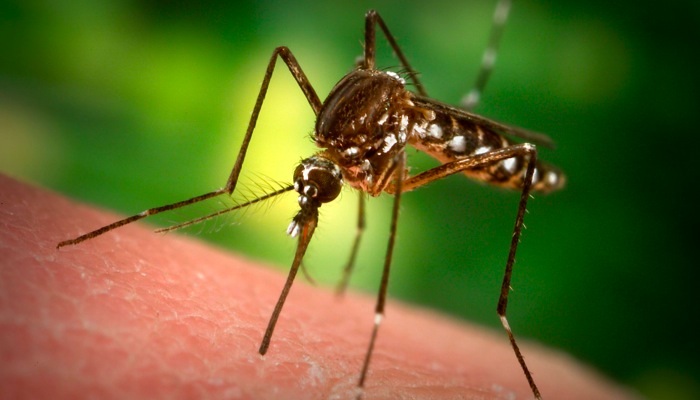HOME | connecting populations | seasonal interactions | climate change | disease | urbanization
energy extraction | agriculture | invasive species | air strikes
Understanding migratory connectivity is critical to predicting and understanding disease transmission among domestic animal, wildlife, and human populations.
Recent threats to humans and wildlife
Since 1999, West Nile Virus has spread across North America resulting in the deaths of hundreds of people and tens of thousands of birds and other animals. The short and long term impacts of West Nile Virus on wildlife, it’s prevalence in the ecosystem, and the incidence of disease in humans and other animals are uncertain. Many bird populations have been drastically reduced by West Nile Virus and are only now recovering.
- Unraveling these issues requires knowledge of the virus, its hosts and vectors, and their relationship with the environment
- It is now generally asserted that the virus moved across the country through birds.
- Lack of information on migratory connectivity limits our understanding of where and how virus outbreaks will occur
The highly pathogenic avian influenza (H5N1), which moved across Asia and eventually into Europe and Africa, has a similar story. Poor migratory connectivity knowledge for birds in those regions made it impossible to predict the where the virus would move next.
Other migratory animals also can also be vectors for disease.
- Fruit bats are known to transmit Ebola, Nipah, and Hendra viruses to humans and livestock
- As bats change their migratory habits in response to human activity, locations and probability of transmission also change
- Fish farms near important wild salmon migration routes are increasing the rate of sea lice transmission to juvenile salmon and causing alarming rates of die-off in salmon populations
Dynamics with migration
Disease is an important factor in the evolution of migration and patterns of migratory connectivity. Research suggests that pathogen densities and disease may influence the evolution of migratory behavior at the population level. Understanding migratory connectivity for a population can give insight into adaptive behaviors that reduce pathogens and disease. Among other species, migration can increase the spread of disease.
- For monarch butterflies and reindeer, yearly migrations help reduce parasite loads because the animals move away from invested areas and because heavily infected individuals cannot survive migration stress
- Densely populated stopover points for birds (e.g. Delaware Bay on the Atlantic Coast and Copper River Delta in Alaska) are known to have high likelihoods of disease transfer
- Migration can weaken immune systems and make individuals more vulnerable to pathogens.
The challenge
Human factors like habitat destruction and barriers may prevent migration, disrupting millions of years of evolution. Understanding migratory connectivity can help us preserve important migration routes and prevent higher than normal rates of infection among wildlife populations.
References
- Altizer, S.M., 2001. Migratory behavior and host-parasite co-evolution in natural populations of monarch butterflies infected with a protozoan parasite. Evolution Ecology Research 3:611-632.
- Bradley, C.A. and S. Altizer. 2005. Parasites hinder monarch butterfly flight: implications for disease spread in migratory hosts. Ecology Letters 8: 290-300.
- Fergus, R., M. Fry, W.B. Karesh, P.P. Marra, S. Newman, and E. Paul. 2006. Migratory Birds and Avian Flu. Science 312: (5775) 845-846.
- Gilbert, M., X. Xiao, J. Domenech, J. Lubroth, V. Martin, and J. Slingenberg. 2006. Anatidae migration in the western Palearctic and spread of highly pathogenic abian influenza H5N1 virus. Emerging Infectious Diseases 12: (11) 1650-1656.
- Ishiguro, F., N. Takada, and R. Masuzawa. 2005. Molecular evidence of the dispersal of Lyme disease Borrelia from the Asian continent to Japan via migratory birds. Japan Journal of Infectious Disease 58: 184-186.
- Morshed, M.G., J.D. Scott, K. Fernando, L. Beati, D.F. Mazerolle, G. Geddes and L.A. Durden. 2005. Migratory songbirds disperse ticks across Canada, and first isolation of the Lyme dises spirochete, Borrelia burgdorferi, from the avian tick, Ixodes auritulus. Journal of Parasitology 91: (4) 780-790.
- Rappole, J.J., S.R. Derrickson, and Z. Hubálek. 2000. Migratory birds and spread of West Nile virus in the Western Hemisphere. Emerging Infectious Diseases 6: (4) 319-328.
- Reed, K.D., J.K. Meece, J.S. Henkel, and S.K. Shukla. 2003. Birds, migration and emerging zoonoses: West Nile irus, Lyme disease, Influenza A, and enteropathogens. Clinical Medicine and Research 1: (1) 5-12.
- Smith Jr., R.P., P.W. Rand, E.H. Lacombe, S.R. Morris, D.W. Holmes, and D.A. Caporale. 1996. Role of bird migration in the long-distance dispersal of Ixodes dammini, the vector of Lyme disease. Journal of Infectious Diseases 174: (1) 221-224.
- Waldenstrom, J., S. Bensch, S. Kiboid, D. Hasselquist, and U. Ottosson. 2002. Cross-species infection of blood parasites between resident and migratory songbirds in Africa. Molecular Ecology 11: 1545-1554.
HOME | connecting populations | seasonal interactions | climate change | disease | urbanization
energy extraction | agriculture | invasive species | air strikes


